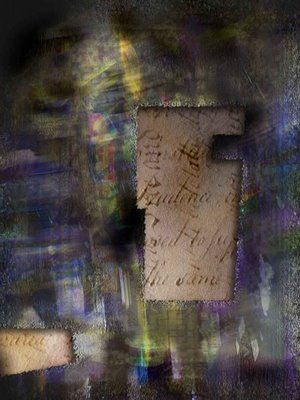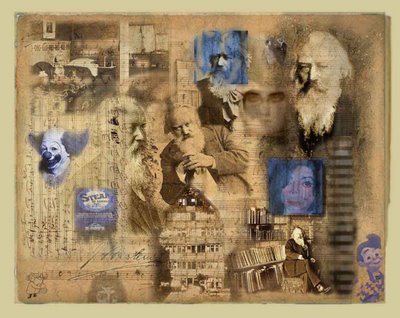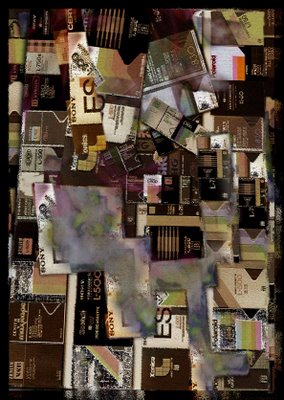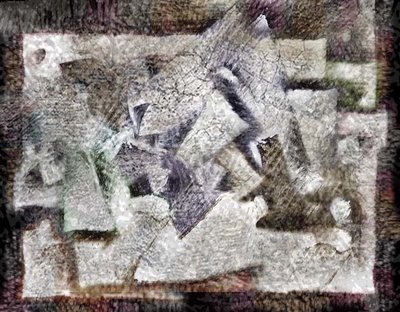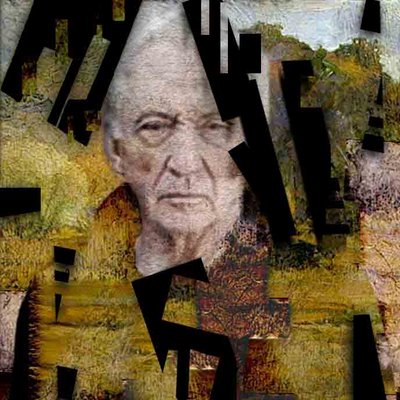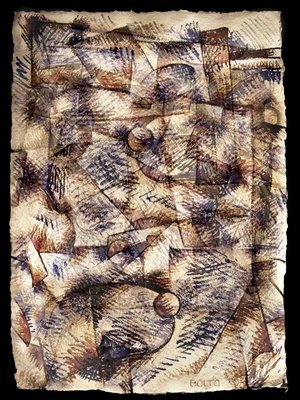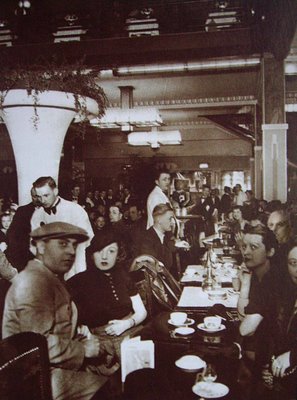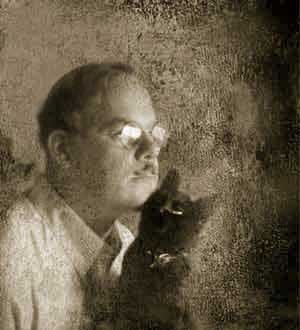bolto referenced in current art exhibitions

Marvick's "The Dancing Men 2" seems to be a response to the art of Bolto
The American notebooks of the late Franco-Russian modernist painter Bolto were cited in a recent exhibition of art in the southern Utah area of the United States. Painter Andrew Marvick, a professor of art history at Southern Utah University, has apparently been reading Bolto's diaries from the early part of the master's career, and referenced some of Bolto's comments in the titles of an oil painting (Nor Black Motive Drawn, 2009) which appeared in last year's faculty art exhibition at the Braithwaite Fine Art Gallery in Cedar City. When asked for an update, Dr. Marvick filled us in that his next major exhibit, scheduled for the 2010 faculty show scheduled to open in January of next year, will also refer to Bolto's American period: "The theme of this year's exhibition is a continuation of last year's which began a series of shows investigating the natural landmarks of Southern Utah with a group of works on the subject of Zion National Park. This new collection is a response to the Parowan Gap. My contribution is entitled "The Dancing Men 2: 'Neither Was the Good Nor Even . . . '" Professor Marvick emailed the explanatory label that will accompany his painting -- a large-scale non-objective oil on canvas:
> Andrew Bolton Marvick
> The Dancing Men 2
> ("Neither was the good nor even . . .")
> oil on canvas, 48 x 36 inches, 2009
>
> Bolto, the Franco-Russian modernist painter and
> collage artist (1904-2008) wrote tellingly of
> Parowan's famous landmark in his
> American notebooks of 1932-34:
>
> "I beheld the Great Gap yawning mysteriously before
> me, and knew all at once that neither was the good
> nor even the malevolence of the Nature I was wont
> to imagine present here, only Her overpowering
> indifference . . ."

Marvick's 2009 painting was a response to Bolto's visit to Zion National Park in the early 1930s
Professor Marvick suggested that there may be more to the painting's title than at first meets the eye. He would not elaborate; instead he offered the equally curious text that accompanied his Zion painting in January of 2009 as explanation:
> Andrew B. Marvick
> Nor Black Motive Drawn
> 2009
> oil on canvas
> 48 x 48 inches
> This painting seeks to reflect my memories of a
> childhood visit to Zion National Park. Its
> predominant earth tones are derived from a
> range of pigments ground from actual Zion earth.
> I should mention also that I was inspired by the
> following passage in the American notebooks
> (The Mourning Echo, 1932) of the Russian-born
> French modernist painter Bolto: "Scanning the
> canyon [of Zion], I saw laid out before my plane
> of vision a vast and warm array of earthen
> shadow from which I felt no foul purpose
> could be engendered, nor black motive drawn."


















